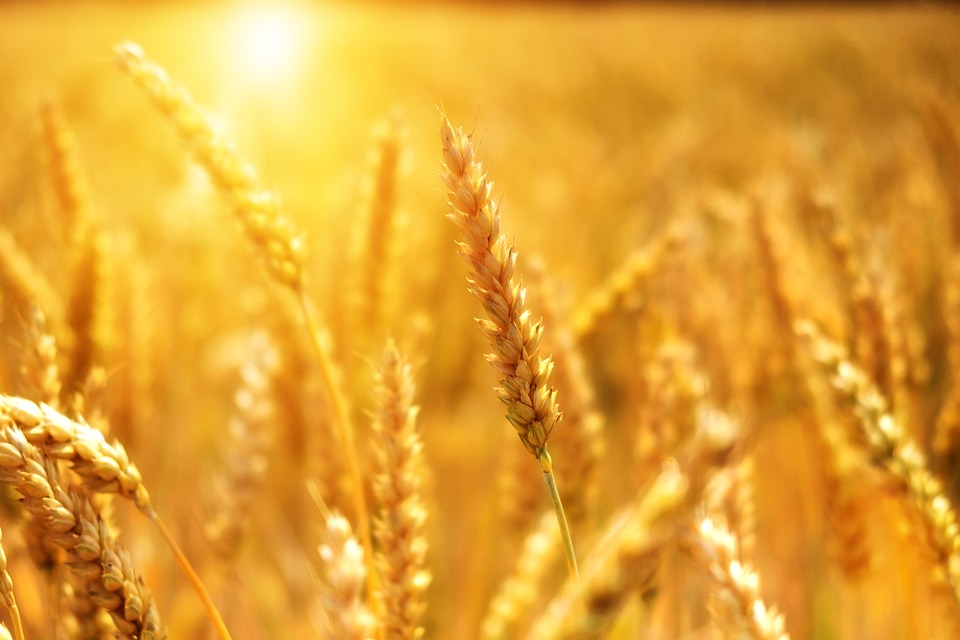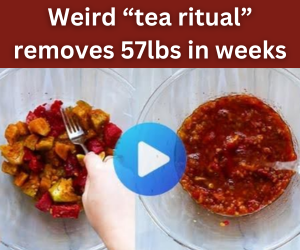
Quick: How do you feel about grains?
Do they provide the body with essential nutrients that are necessary for good health?
Are carbs and toxins really evil? Do they make you fat and slowly kill you?
There are two groups of people here. The first group consists of vegans, vegetarians, and macrobiotic dieters, who eat a lot of whole grains. Some people believe that eating grains can help them live longer and healthier lives free of chronic diseases. A recent study from Harvard found that consuming grains is linked to a lower risk of death.
On the other side, there are those who advocate for the Paleo, Whole30, and Atkins diets, which involve limiting or avoiding grains altogether. Some people believe that avoiding grains will help them to live longer and stay healthy, free from chronic illness.
An old staple
Grains are a food source that dates back many years and is still the primary source of calories for people across the globe.
There are many different types of grains including wheat, rice, oats, corn, barley, buckwheat, rye, triticale, quinoa, teff, amaranth, sorghum, millet, spelt, and kamut.
The debate about grains can make it seem like they’re a relatively new addition to the human diet, but we’ve actually been consuming them in some shape or fashion for millions of years. Cultivating wheat allowed us to abandon the nomadic lifestyle and develop the civilization that we know today.
The nutrients present in grains include vitamins, minerals, fiber, and phytonutrients.
Whole vs. refined grains
There is confusion about this issue because people assume that “grains” and “carbs” are the same thing.
Carbohydrates are molecules that are based on sugar and can be found in many different types of foods. This includes items such as bread, pasta, potatoes, beans, desserts, soft drinks, and even whole grains.
Refined grains are ones that have had their bran and germ stripped away through milling. They provide all the carbohydrates, but hardly any of the nutrients found in whole grains. Many pre-packaged foods contain high levels of fat and salt.
processed grains are tasty and easy to consume but lack satiation leading many people to overeat and chronic disease.
But what about whole grains?
Aren’t they bad for you, too?
The (supposed) ill effects of grains
There is a debate about whether grains are healthy or not. Some people say that grains can cause problems like inflammation, intestinal damage, and obesity. What does science say?
Inflammation
There is a large number of people who hate grains and say that they cause low-level inflammation, which is when the body’s immune system attacks its own tissues and causes cell damage.
They use a few studies to prove their point.
The study found that people who added 19 grams of wheat bran to their daily intake felt fuller than those who didn’t. After three months had passed, the participants had higher levels of oxidized low-density lipoprotein cholesterol, which might be indicative of greater inflammation.
Cue the grains-cause-inflammation rumors.
The problem? At the end of the experiment, 44 out of 67 subjects had quit.
This makes the final data sketchy at best.
Whole grain intake has been linked to lower levels of inflammation in several large epidemiological studies.
Of course, these are just links. You need controlled trials to prove any causal relationship.
In general, controlled trials either show no effect of whole grains on inflammation or show that whole grains actually decrease inflammation.
The fitness industry believes that inflammation is the main cause of health problems and that gut health is the key to preventing these issues. This is a false premise.
Food sensitivities can lead to inflammation, which can cause disease in other parts of the body.
Many diseases are accompanied by inflammation, which can worsen the condition or cause other problems.
There has been a lot of research done on this topic. And lots of inflammatory markers we can now test.
There is confusion about the meaning of this.
Even though inflammation is a common factor in many diseases, it is not usually the root cause of the disease.
Intestinal damage
The anti-grain movement believes that grains are damaging to your intestines because they contain anti-nutrients and other compounds which interfere with your ability to absorb minerals.
At least three studies have investigated this theory. The study found that consuming various amounts of whole wheat flour, wheat bran, and/or oat bran had no significant effects on the absorption or blood levels of calcium, zinc, or iron.
Let’s look at a few anti-nutrient players.
- Lectins: These proteins bind to cell membranes, which can cause damage to intestinal tissue if you consume very large amounts or don’t cook the plant first (just a few sprouted red kidney beans would result in some terrible GI symptoms). But the body also uses lectins for basic functions like cell-to-cell adherence, inflammation control, and programmed cell death. Lectins may even reduce tumor growth and decrease the incidence of certain diseases.
- Phytic acid: The storage form of phosphorus, phytic acid can bind minerals in the digestive tract, preventing their absorption. In really large doses, it can cause nutrient deficiency and related problems (it’s been blamed for short stature throughout Egypt’s history). But you’d have to eat copious amounts of bread that haven’t gone through leavening—a standard process that significantly reduces phytic acid levels—for this stuff to be a threat. In fact, in reasonable amounts, phytic acid has a number of possible health benefits.
- Protease inhibitors: When raw or lightly cooked, grains still contain large amounts of protease inhibitors, which block the action of protein-digesting enzymes, interfering with your protein absorption. But once appropriately cooked, grains contain very few protease inhibitors—and those that remain actually have anti-inflammatory and anti-cancer properties.
If you eat a lot of foods that contain anti-nutrients or don’t cook them properly, they can be a problem. If you eat a variety of foods and carbohydrate sources, you will likely be fine.
Some research suggests that a protein called gluten, which is found in some grains, may make the lining of your intestine more permeable. But all of these studies were conducted on cells or tissue that has been removed from the body, meaning in an unnatural environment.
Studies that are done in actual living people, as opposed to in a laboratory, have found that consuming grains can actually help relieve symptoms of Crohn’s, ulcerative colitis, and irritable bowel syndrome.
People who would be most prone to the supposed intestinal damage inflicted by grains are the ones who would know about it.
Yes, grains contain anti-nutrients—because all plants contain anti-nutrients. Broccoli, spinach, and other green leafy veggies. Red wine. Dark chocolate. Nuts. Seeds. Green tea.
Heck, fiber itself is an anti-nutrient.
It would be foolish to avoid eating plant foods because they contain compounds that make them difficult to digest. Just as it would be foolish to avoid eating a lobster because it has a hard shell and sharp claws. All living things try to avoid being eaten. It’s simply not a tenable argument.
Gluten intolerance
Gluten is a protein that is found in wheat, rye, and barley, and the visco-elastic properties of gluten are what make bread so delicious.
Celiac disease is an autoimmune disorder that is caused by exposure to gluten. When people with celiac disease eat gluten, it causes inflammation in the small intestine and the immune system attacks the small intestine, damaging its cells.
This can inhibit digestion over time and make the gut more permeable, allowing toxins, undigested food, and bacteria to enter. Celiac disease can cause symptoms like diarrhea, nutrient deficiencies, osteoporosis, and even cancer. The only treatment for celiac is a gluten-free diet.
Celiac disease is a challenge to diagnose because it is not well understood. There are currently several different blood tests and intestinal biopsies, but none of these is 100 percent accurate.
Celiac disease affects a wide range of the population, from 0.3 to 1.2 percent. Some even speculate that it affects up to 3 percent of the population. Around 1 percent of Americans have celiac disease, according to most experts.
Approximately 10-20% of the population may suffer from some other form of gluten intolerance. NCGS is a condition that produces symptoms similar to celiac disease (bloating, pain, diarrhea) but does not cause intestinal damage or involve any autoimmune markers.
But all of this is up in the air. The researcher who found evidence of NCGS had doubts and did a more thorough follow-up study. He and his colleagues concluded that there is no evidence to support the existence of NCGS.
If you don’t have an intolerance to gluten, there’s not much evidence to suggest that you need to remove it from your diet.
If you’re looking to improve your health by avoiding gluten, you may actually be doing the opposite. Many gluten-free products have extra sugar and fat to make them taste better.
But Why So Many Allergies to Grains and Wheat Especially?
There is a possible explanation for the drastic rise of grain-related allergies and intolerances in the last two decades that can be found by looking at the changes in grains from the invention of the modern steel mill and the high-yield dwarf varieties cultivated in the 1960s.
Are Grains and Wheat Toxic?
Grain consumption doesn’t seem to be as big of a problem in other countries. While many people find that they can eat wheat and other grains while traveling, some may have reactions to these foods if they eat them in the United States. I have several friends who have traveled and found that their skin and digestive issues have improved after consuming more processed grains while they were out of the country.
There are some types of grains that my family members can eat without any problems, like imported organic Einkorn wheat or the ancient grain spelt. However, they have a terrible reaction to regular wheat or grain products. Why is this? This suggests that gluten intolerance may not be as big of a problem as we think it is.
The answer to the question may be more simple than people are thinking. It may have to do with the methods of cultivation and spraying that have changed in the last few decades.
The Real Problem with Wheat
So what’s a mom to do? Many experts in the health world say that grains, especially gluten-containing grains, are not good for you. According to JJ Virgin and Dr. David Perlmutter, wheat and gluten should not be given to kids, as grain is a large contributing factor to the rising epidemic of MS and other brain conditions.
I agree with the Healthy Home Economist that the new pesticides are a large part of the problem. The rise in wheat and gluten intolerance in the U.S. matches up much more closely with the timeline.
From her article “The Real Reason Wheat Is Toxic Is Not Gluten“:
” The use of the herbicide Roundup, or other herbicides containing the active ingredient glyphosate, to kill wheat and barley crops before harvest was suggested as early as 1980. This technique has been used regularly for the past 15 years by conventional farmers as a way to dry crops before harvest. Dr. Stephanie Seneff of MIT has studied the use of glyphosate on wheat crops and has found that most non-organic wheat in the United States is now contaminated with it.
Many countries have banned glyphosate, which may be why they are doing better.
Other Reasons for the Problem with Grains and Wheat
I believe there are several other effects of our grain consumption, aside from the problems with modern grains themselves and the way they are cultivated and processed.
More Grains = Less of Other Foods
We consume more grain products than ever before, with corn and wheat being two of the most popular. We are consuming less fat and fewer vegetables than we have in previous decades.
Since our increased consumption of refined grains can spike insulin levels and they are highly processed carbohydrates, this may be partially to blame for the rising rates of diabetes and obesity (though of course, other factors come into play here as well).
The majority of processed foods contain grains such as wheat because they are CHEAP, last a long time without going bad, and are easy to make. We are consuming too much of these unhealthy foods and not enough of the healthy ones like vegetables, proteins, and fats.
Fewer Nutrients
If we consume fewer grains, that means we are also consuming fewer of the nutrients found in other foods like fresh produce, ethically sourced proteins, and healthy fats. Since modern grains have fewer nutrients, it’s harder to get the nutrients we need from food.
Micronutrient deficiency is believed by many experts to play a significant role in the development of various contemporary illnesses. The reason for this is that it is difficult to get the necessary amount of micronutrients from our food. A large percentage of modern food supplies are made up of grains, however, these same grains are low in nutrients. This lack of nutrients in our food is contributing to various problems.














